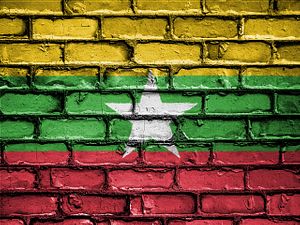Over the past week, we have heard renewed calls for a ceasefire in Myanmar’s longstanding ethnic conflict in the wake of the global coronavirus pandemic. While these calls are notable, it remains unclear whether they will be heeded and if they can actually be sustained and translate into positive developments for the evolution of broader peace and conflict dynamics in the country.
As I have observed before in these pages, governance in Myanmar remains a complex and contested affair, with the National League for Democracy (NLD) ruling the country but a series of ethnic groups engaged in conflict with the government amid a fledgling peace process. That conflict has continued to flare up amid wider dynamics in 2020, including contested civil-military tensions, the still ongoing Rohingya crisis, the countdown to Myanmar’s elections expected this year, and the global coronavirus pandemic which has been belatedly recognized.
Over the past week, we have seen these dynamics at play with respect to calls for a ceasefire in Myanmar’s ethnic conflict amid the coronavirus and reactions by Myanmar’s military, known as the Tatmadaw. The calls came amid suggestions made by the UN Secretary General Antonio Guterres for a ceasefire in recognition of the common threat posed by COVID-19, one that we have seen reverberate to varying degrees amid Southeast Asia’s conflicts including in the southern Philippines and southern Thailand. They also come amid growing international concerns about how COVID-19 could only deepen the humanitarian issues facing vulnerable populations within Myanmar, especially given developments over the past few years including the Rohingya crisis.
Within Myanmar, individual armed ethnic groups, including the Karen National Union and the Chin National Front, have called for a ceasefire of this sort. And internationally, there have been calls coming as well, with a case in point being a public call by several ambassadors to Myanmar from Australia, Canada, New Zealand, and several European countries for a pause in conflict.
While the calls for a ceasefire of this sort are in line with broader instances we have seen with respect to other conflict zones, they are not without significance. A pause in fighting at the very least would provide an opportunity to manage some of the humanitarian issues that have been noted and could only exacerbate in coming months, including the need for medical assistance and restrictions in communications. It could also provide an opening for broader inroads in the management of peace and conflict more generally in the country, even if for a temporary period.
But while such calls are notable, it remains to be seen whether they will actually be heeded and translate into sustainable gains for peace and conflict dynamics in Myanmar. Thus far, the resistance shown from Myanmar’s military – with a spokesman from the Tatmadaw’s public relations wing saying these calls were “not realistic” – suggest that there continues to be opposition in some quarters to this. And it should be noted that even though initial acquiescence to a ceasefire would constitute a step in the right direction, the longstanding dynamics of Myanmar’s ethnic conflict – including divisions between the full range of ethnic armed groups and civil-military divisions within the government – will make sustaining any progress and achieving meaningful change difficult.
That does not mean that we ought to dismiss the new coronavirus ceasefire talk with respect to Myanmar’s ethnic conflict entirely. It is still early days, and we have yet to see the government’s approach fully play out as it tackles the growing COVID-19 challenge. And even if a ceasefire is not agreed upon or subsequently sustained, international calls for peace can still affect how more specific conflict dynamics – including the humanitarian situation of vulnerable groups – are managed. Therefore, how exactly things play out on this front will continue to be important to watch carefully in the weeks and months that follow.

































